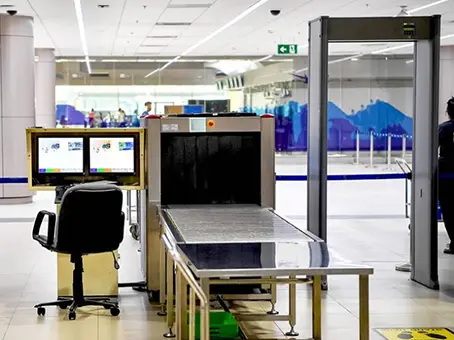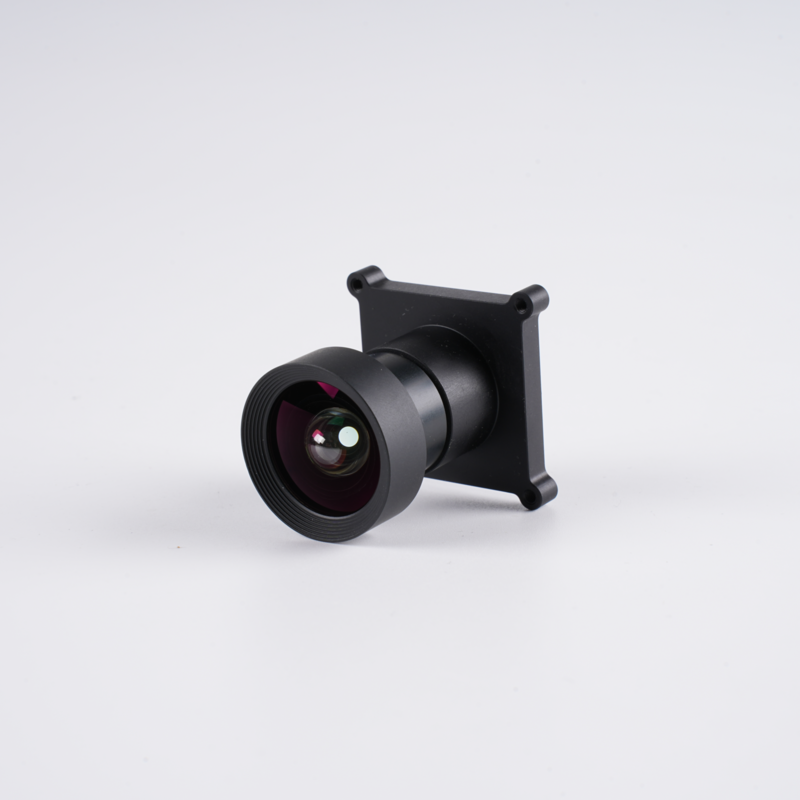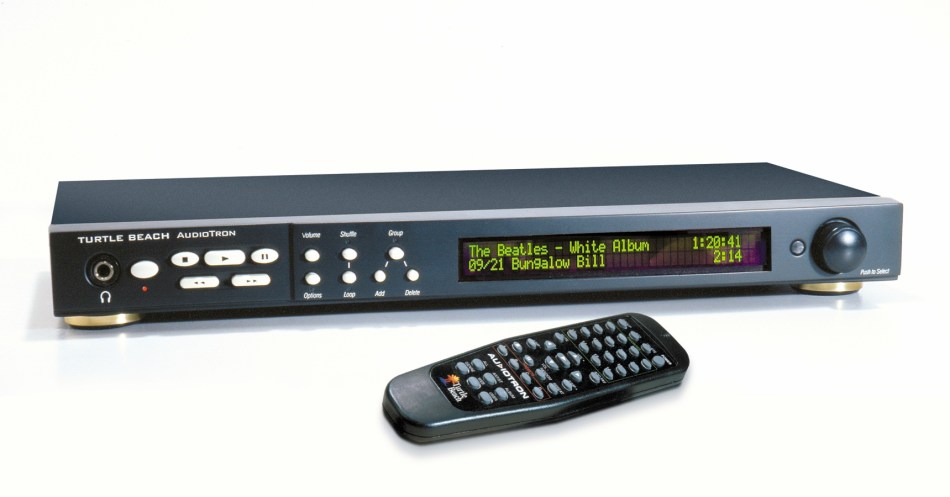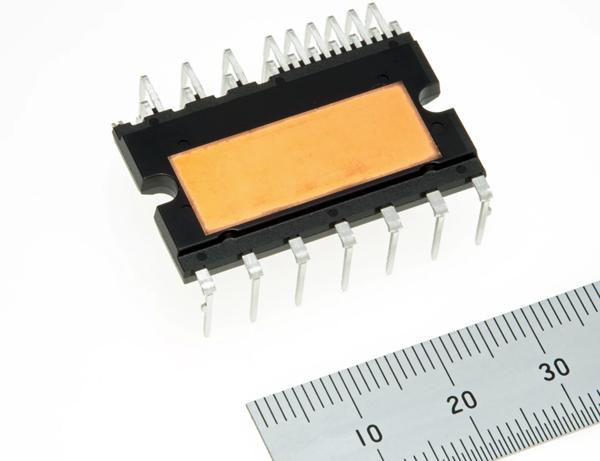
A holiday shopping guide for engineers: 2022 edition
- Consumer
- 2023-09-23 22:51:54
This’ll be the fourth consecutive year that EDN has published my ode to holiday-excused consumerism: here are the 2019, 2020 and 2021 editions (I skipped a few years between the 2014 edition and its successors). As before, I’ve included up-front links to the prior-year versions because I’ve done my best here to not regurgitate any past product category recommendations, since the stuff I’ve suggested in the past largely remains valid. That said, it gets harder each year to not repeat myself!
Without any further ado, and ordered solely in the cadence in which they initially came out of my noggin…
A gimbal-inclusive video camera
As I mentioned in last year’s gift guide, it’s no longer strictly necessary to acquire a dedicated-function video camera to capture high-res, high-quality digital “film” footage. SLRs, mirrorless still camera successors and even point-and-shoots can now also record 4K and even higher-resolution video, within the practical limits of their image sensors’ resolutions, processors’ calculations-per-second, and storage speeds and capacities.



Many modern smartphones are even up for the HD video task, although you’ll need to be mindful of potential overheating after extended “shoots”, along with accelerated battery drain in conjunction with non-removeable/replaceable batteries. They’re first and foremost phones, after all, and you don’t want to do anything that might cause you to miss taking an important incoming call or be unable to make an important outgoing one. And, as detailed in another writeup earlier this year, all this gear is capable of being mated to appropriate-sized and-featured gimbals that ensure the video footage is rock-solid.
Here’s the thing about gimbals, though…they work great, especially if you mate each one you own to one (and only one) image capture device. Start swapping the same gimbal among multiple smartphones (for example), however, and things quickly get hassle-y. One-time setting up a gimbal for a specific device is tedious enough; re-configuring its balance and other parameters for another (and another…rinse and repeat) with different dimensions, weights and weight distributions is an exercise in patience that would strain even a saint.
One of my acquisitions from earlier this year aspires to solve these upfront setup issues. It’s a first-generation DJI Osmo Pocket:

Introduced in April 2019 for $349, the Osmo Pocket was subsequently superseded by the updated Pocket 2 a year and a half later…which is part of the reason that I got such a good deal on mine (initially just over $180 after the 20% promotion discount). Another factor in the discounted price, befitting its Amazon Warehouse origins, is that it was in “like new” used condition. And unfortunately also “par for the course” given its Amazon Warehouse origins, it arrived missing the iOS smartphone adapter, which truth be told, I didn’t need anyway, given that my current phones are USB-C-based Android devices. Still, I protested—hey, I might move to iPhones in the future—so Amazon gave me a ~$20 refund in exchange for keeping it.
My initial savings predictably ended up getting gobbled up by all the accessories I subsequently acquired, however:
External microphone adapterPocket charging case“Suite” cases in small, medium and large sizesSmartphone bracket with multiple “cold shoes” (as alluded to earlier, you can tether the Osmo Pocket wired or wirelessly to a smartphone acting as a larger-display controller)Extension rodMulti-accessory expansion kitNeutral density filter set, andMultiple sufficiently speedy and high-capacity microSD memory cardsSigh. Still, I don’t have buyer’s remorse. The Osmo Pocket is convenient to grab-and-go whenever I want to shoot some video, and its battery life is passable even at its highest-resolution and quality capture setting. About the only thing I miss is its complete absence of zoom capabilities…optical would be ideal, but even modest digital (particularly when I’m shooting 4K but will end up rendering to 1080p) would be acceptable.
There’s one other hiccup that also bears noting, although it’s seemingly United States- and Android-specific, and for that matter applies to all DJI products, not just the Osmo Pocket; the US Department of Defense (DoD) has blacklisted the company due to its claimed ties to various Chinese government entities. And, as such, you can’t access DJI applications (such as Mimo for the Osmo Pocket, or Fly for the company’s drones) directly from the Google App Store. Instead, you need to “sideload” them by first enabling installs from “unknown source” in Android’s settings, then downloading and installing them from DJI’s website. This juggling act is beyond the capabilities of the average consumer, I’d wager, which I suppose is the point…but curiously, the DJI app suite is alternatively available hassle-free from Apple’s App Store. Hmm.
A quality still camera
Back in 1998, I acquired a used Pentax 67 (aka, 6×7) medium format film camera, which I subsequently supplemented with a raft of additional lenses, flash units and other accessories:

Quoting from Wikipedia:
This hefty camera with a general dimension body of 7.25 inches × 4.5 inches × 3.75 inches (18 cm × 11 cm × 9.5 cm), and with the standard prism and 105 mm lens, would bring it to 7.5 inches × 5.75 inches × 6.5 inches (18 cm × 14.5 cm × 17 cm).
And to quantify “hefty”:
The camera resembles a conventional 35 mm SLR camera, with interchangeable viewfinder and lens, but is considerably bigger and heavier, weighing 2.3 kilograms (5.1 lb) with the plain prism and standard (105 mm f/2.4) lens.
Aside from its anvil-reminiscent characteristics, it was only capable of capturing ten (120) or twenty-one (220) pictures before I needed to stop and swap in a new (expensive both to acquire and to develop) roll of film. But for years I happily dragged it around Yosemite and other locales in an equally bulky backpack, complete with a large tripod strapped to the side. And the seeming tedium necessary to operate it turned out to have a silver (halide?)-lining upside. The effort and expense necessary to capture just a single image forced me to be far more selective about what images I ended up capturing, which forced me to be much more aware than I otherwise might be about the beautiful scenery that I was moment-by-moment surrounded by…which led to a far richer appreciation for that scenery and my experiences in it.
Pentax to date hasn’t announced a digital version of the P67, but it has released two digital variants of the slightly more compact medium format P645, the film version of which I never owned. The 645D, unveiled in 2010, leveraged a now-archaic Kodak CCD image sensor, while the 645Z, which began shipping four years later (and is still in production), harnesses a higher resolution and otherwise more robust CMOS image sensor (capable of, among other things and referencing the discussion earlier, capturing 720p video).

Earlier this year, for my birthday, I gifted myself with a lightly used P645Z body-and-lenses set, which had previously been owned by a professional photographer (who’d decided to focus on astrophotography going forward, therefore not needing his medium format gear any longer), subsequently supplemented by a few more optics pieces. Unlike the P67, it doesn’t “suffer” from limited, expensive image storage media. But it still begs for a notable time-and-effort investment each time I get it out to do some shooting…which, as I’ve already explained, isn’t a bad thing. So far, I’ve not used it as much as I aspire to in the (retirement) future, when I hopefully have more disposable time on my hands along with ongoing mobility and other measures of good health, but I’m still having a blast with it.
I realize that my perspective may be seen as archaic by some…after all, the foundational concept of owning any camera is seemingly viewed as increasingly anachronistic. And I’ve always been a believer in the well-known saying (among photographers, at least) that “the best camera is the one that’s with you”…which often means the smartphone in your pocket or purse. But if you’ve got an interest in capturing image memories and the disposable income to turn it into reality, I’d encourage you to follow in my acquisition footsteps. You won’t regret it.
Upgrade your smartphone
At least some long-time readers may, I suspect, be wondering why I go through mobile phones as often as I do. Historically, it had at least something to do with the initially rapid pace of both hardware and software development, coupled with my occupation as a technology analyst…or maybe that was just my rationalization?
Nowadays, however, my motivation is more pragmatic. For any of you who’ve asked the “Why upgrade your smartphone?” question, I’ll answer it by asking my own question. Would you feel comfortable using a computer that was running an out-of-date, no longer supported (therefore vulnerable to hacking) operating system version? Of course not. Then why would you feel comfortable using an increasingly sophisticated, personal information-saturated smartphone running an out-of-date, no longer supported operating system version? Get my drift?

For Android, support longevity is OEM-dependent, since everyone gets the same base operating system releases and patches and it’s up to each Google partner (along with Google itself) to tailor the software to their particular hardware implementations (and at some point, decline to continue to do so). Google’s branded Pixel products, for example, were historically only guaranteed for three years of updates, including both security patches and operating system upgrades. With the newest Pixel 6 and 7 families, the situation has favorably evolved, but only to a point…five years for security fixes, but only three years for foundation software.

The situation with iOS is even more fluid, even though there’s only one OEM (Apple itself) to comprehend. Take the iPhone 6s, for example, which was unveiled in September 2015. It just dropped off the support list with the release of iOS 16, seven years later, which IMHO translates into impressive longevity. The iPhone 4, conversely, was only supported for four years. Some of this variation, I suspect, has to do with the functional degree (and fundamental speediness) with which legacy hardware can run more advanced software, which I’d posit correlates to why support lifetimes were shorter with early iPhones, when iOS was evolving comparatively rapidly. And some of it pragmatically probably has to do with Apple’s desire to migrate its customers off that legacy hardware and onto newer devices, i.e., “obsolescence by design.”
The bottom line: if you’re running a no-longer-supported smartphone, you’re not only not “spoiling” yourself with the latest hardware and software feature advancements. You’re also opening yourself up to unwanted attention from hackers. Okay with having your photos seen (and spread) by others? Your emails and text messages? Your banking information and passwords? No? Then get yourself a new smartphone for the holidays, earlier than that if your situation is dire. And if you have friends and family members that are in similar straits, they’re also upgrade candidates. I only wish that the devices you and they retire could be meaningfully recycled.
Refresh your home office
Over the past several years of pandemic-induced home office equipment demand increases, coupled with supply chain constraints, you pretty much had to acquire whatever gear you could get your hands on at whatever price you had to pay. Thankfully, these issues are slowly but surely easing of late, so you’re now more likely to be able to buy what you want and pay much less in the process, refreshing the sub-par stuff you’ve been suffering through up to this point (just please donate the castoffs). Because although the pandemic’s grip may be loosening, it’ll be a “hybrid” (if not ongoing work-from-home) world going forward for many.
Some suggestions, from my recent (or not) personal acquisitions:
Computer Monitors
I just picked up two like-new (with no bad pixels, to boot) ASUS VA229HR 21.5” FHD LCDs, one Amazon Renewed for $79, and the other from Amazon Warehouse inventory for ~$75. Admittedly their video input allotments are scant—only VGA and HDMI—and their built-in speakers are sufficiently wimpy to beg for a “pass” in favor of discrete alternatives (keep reading). And they don’t offer integrated height adjustment, either. But, their IPS panels deliver deep blacks and wide viewing angles, and their higher-than-normal (75 Hz) refresh rates are keen to mainstream gamers. And did I mention that they were less than $80 each? That said, gifting something already used to someone else is admittedly awkward; the VA229HR currently sells for $109 brand new at Amazon. More recommendations at The Wirecutter.

Webcams
Admittedly, particularly when I’m participating in an “internal” virtual meeting and feeling lazy, I continue to rely on the lame, but passable webcam built into the bezel of my laptop. When I want to look my best, however (a wasted effort…I know…), I still fire up my HDV camcorder in combination with a HDMI-to-USB3 adapter. But you don’t necessarily need to go to the same lengths I did, especially if your resolution needs are more modest. The Logitech C920S Pro HD currently tethered to the Mac mini to my right is more than adequate for most situations, in my opinion; The Wirecutter agrees. And if your preferred virtual meeting and/or webinar service supports 4K (and your Internet service can deliver the requisite upstream bandwidth), Logitech’s Brio (currently tethered to the Mac Pro to my left) isn’t a bad update. Just don’t forget to shave (gender-dependent comment) and floss the food out of your teeth and mask those skin blemishes (gender-independent comments), as any deficiencies in these areas will be inherently more obvious to others courtesy of the additional, higher quality pixels.

Lights
All that high quality image capture potential will be for naught if you’re sitting in a dark room or if you’re heavily back- or side-lit. As such, I remain delighted with the sub-$60 off-axis Neewer LED two-light set that I told you about last December. I haven’t needed to twiddle much with the lights’ brightness and color temperature settings, far from their color filters (online “streamers” and “influencers” will likely have more need for such things). But I’m quite fond of the wireless remote control, which precludes me from having to climb over my computer monitors to turn the lights on and off…which I’m doing increasingly often, as the increasingly shorter daylight hours result in more frequent leverage of their illumination assistance.

Some webcams come with built-in ring lights, but turns out I’m not fond of the whole ring light concept, no matter that I’ve previously suggested them. This opinion largely has to do with my presbyopia, therefore my heavy reliance on reading glasses, which result in annoying ring light reflections in the lenses. If you’re not visually compromised, a ring light would likely work fine.
Headsets
And even if folks can see you, your in-meeting impact will be muted (pun intended) if they can’t clearly hear you. Even on my laziest days, I don’t rely on my early 2015 13” Retina MacBook Pro’s built-in microphone and speakers, due to the potential for (minimally) background noise pickup and (more egregiously) echo and feedback loops. Instead, I grab my AirPods Pro set (the second generation of which Apple just announced), if they’re charged up and I won’t be using them for multiple hours straight. But if I’ve got battery “range anxiety”, or more simply just want to proactively head off any possibility of next-room-over microwave oven interference, I’ll still grab my tried-and-true USB headset.

Speakers
Here, I’m sticking with the tried-and-true Klipsch ProMedia 2.1 THX certified speakers that I’ve used for years (several sets are squeezed into my office, actually, mated to various computers) and still lurk near the top of The Wirecutter’s recommended list. The manufacturer has upgraded them somewhat since I bought mine; the speakers now supplement their analog audio inputs with integrated Bluetooth receiver capabilities. And even with that BOM addition, they’re still regularly available on sale for only $59 or thereabouts.

UPSs
This last product category may be new to some of you, who have yet to invest in an uninterruptable power supply (UPS). Or maybe you’re like me, with several decade-plus old UPSs scattered around the residence, backup-powering and surge-protecting various computers (and displays), NASs and essential networking gear. For newcomers, trust me; nothing is a more effective productivity squelcher (not to mention stored-file corrupter) than having your premises electricity go down, leaving you with no backup power source.
And for those of you like me with geriatric UPSs, let me first clarify that I’m not talking about the rechargeable NiCD batteries themselves, which eventually won’t be capable of recharge; but which are easily user-replaceable (at least they should be; shame on any manufacturer who embeds the battery so deeply that you instead resort to just replacing the entire UPS). Instead, consider all the beefy analog and power circuitry inside the UPS enclosure, including but not limited to the AC inverter subassembly; eventually it’ll “go south”, too. Better to get ahead of the swap curve than find yourself with a deceased UPS when you need it. To wit, there’s one currently on my teardown pile that refused to stop beeping even with a fresh battery inside.
The Wirecutter’s recommendation list doubles as a good general resource of what to look for in a UPS. I can also recommend a solid treatise on the topic at TechHive from Glenn Fleischman (a freelancer whose work I regularly find myself recommending). For example, I recently picked up several like-new factory refurbished CyberPower LE850Gs for less than $60 each, which I really like so far. They offer 12 outlets total, half of them surge-protected and the other half also battery-backed, and their 12V/7.2A batteries are widely sourced and easy to swap. About the only negative I can offer is that their inverted-AC outputs are simulated (not true) sine waves, but all the ones I’ve owned have been such and I’ve yet to find a powered device that balks.

Update your computer
This section, unlike those that preceded it, won’t contain any specific recommendations. Instead, I’ll just provide some general suggestions. First, for those of you who’ve resisted the urge to buy a new graphics card over the past several pandemic- and bitcoin-distorted years of highly constrained supply and equally ridiculously high prices, I commend you. I wish I was you. Now, however, the supply situation’s thankfully much more sane. Ethereum’s (thank goodness for “green-ness”) successful recent transition from “proof of work” to “proof of stake” has greatly dampened (albeit not yet completely eliminated) the appeal of using GPUs for such tasks. AMD and NVIDIA are both in the process of launching new graphics architectures (and chips and boards based on them), resulting in “fire sales” to clear retail channel inventories of perfectly good current-generation offerings. And Intel has recently also re-entered the discrete graphics market in a meaningful way, further fueling price-suppressing competition.

DRAM and NAND flash memory (the latter leveraged in SSDs) are both reportedly re-entering the oversupply phase of their longstanding cyclical commodity memory cycles, and a DDR4-to-DDR5 DRAM technology transition is also underway, leading (as with the previously mentioned prior-generation graphics cards) to inventory clearing “fire sales” for DDR4. So, if your PC can handle more DRAM than you’ve currently got installed in it, shoehorn some more in there. And if, heaven forbid, it’s still using a slow-as-molasses HDD, get a SSD and some open-source (or inexpensive) cloning software and swap that boat anchor out. You’ll be glad you did.


Build PCs (or do other techie things) for others
Last, but certainly not least…two of many Bible-sourced sayings that I strive (usually unsuccessfully, nevertheless I persist) to keep “top of mind” are:
It is more blessed to give than to receive, andDo unto others as you would have them do unto youI’ve mentioned several times recently that I periodically build up computers for subsequent donation to local charities. I want to clarify, for anyone who might be suspecting otherwise, that my intention is in no way, shape, or form whatsoever to publicly “pat myself on the back” or encourage my readers to think more highly of me. My admitted underlying motivation is simply and solely to encourage all of you to follow in my (or similar) footsteps.
As engineers, we’ve been blessed with intellects and skills, as well as academic, professional, and personal mentors who’ve encouraged the ongoing cultivation of these competences. Odds are good, too, that you’ve (like me) also been blessed with resultant above-average incomes and bank account balances. I’ve chosen to harness my fiscal and other resources to build computers for use by kids in school, out-of-work folks looking for (and online-interviewing for) jobs, and more generally, anyone who wants to use computer-sourced information to cultivate his or her own intellect. On that last point, I realize that technology isn’t a perfect panacea. But I stubbornly cling to the belief that it still does far more good than harm.
So, find a local charity wherever you reside and build up some PCs for them, too. Or donate the gear you assemble (and/or replace) to the local school computer lab. Or donate your time teaching or assisting in that lab. Or implement any of countless other tech-themed volunteer idea possibilities. By means of analogy to another Biblical story, plant your own mustard seeds in others by means of your time, attention and actions, and watch them blossom.
And with that, having already passed through 3,000 words a while back, I’m going to put my cyber-pen down and pass it along to you for your thoughts in the comments. Happy shopping, happy giving, happy getting and happy holidays, everyone!
—Brian Dipertis the Editor-in-Chief of the Edge AI and Vision Alliance, and a Senior Analyst at BDTI and Editor-in-Chief of InsideDSP, the company’s online newsletter.
Related articles:
A holiday shopping guide for engineers: 2021 editionA holiday gift wish list for 2020A holiday shopping guide for consumer techObsolescence by design, defect, or corporate decreePresenting online effectively: Outfitting the home office setupA holiday shopping guide for engineers: 2022 edition由Voice of the EngineerConsumerColumn releasethank you for your recognition of Voice of the Engineer and for our original works As well as the favor of the article, you are very welcome to share it on your personal website or circle of friends, but please indicate the source of the article when reprinting it.“A holiday shopping guide for engineers: 2022 edition”










